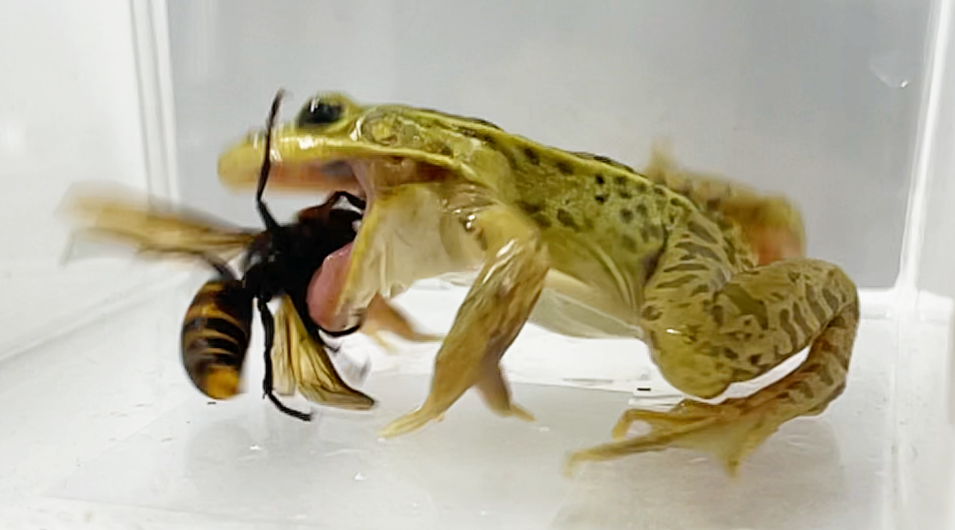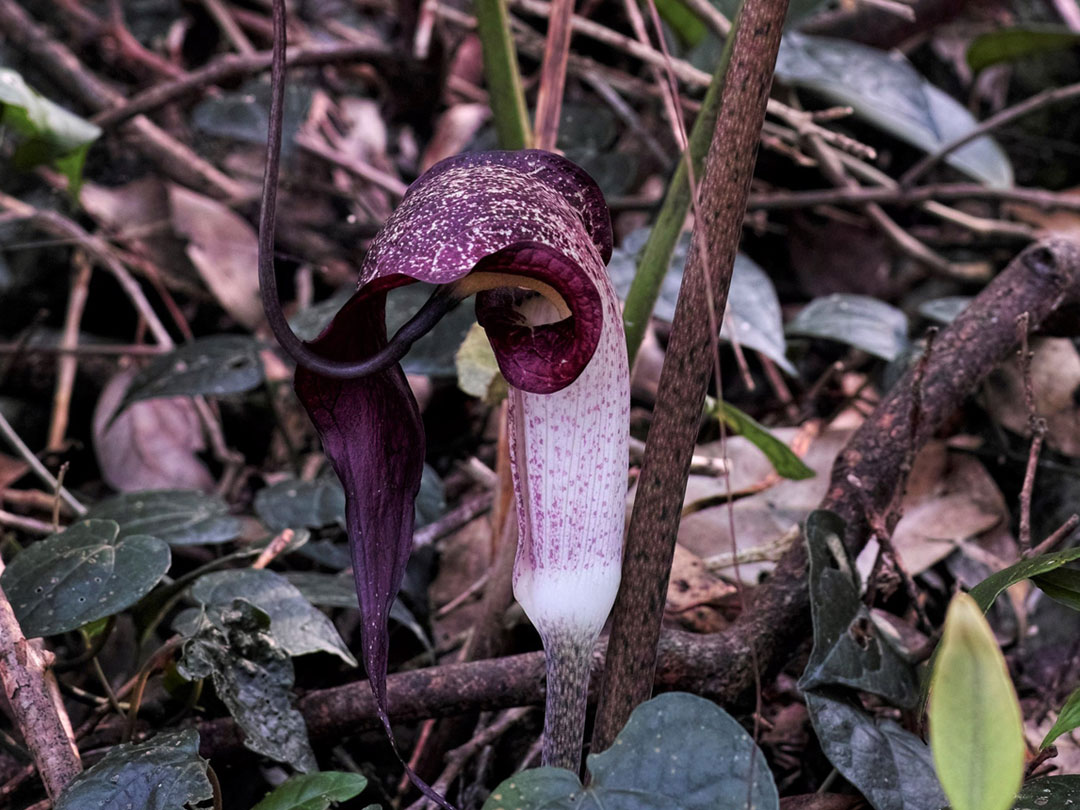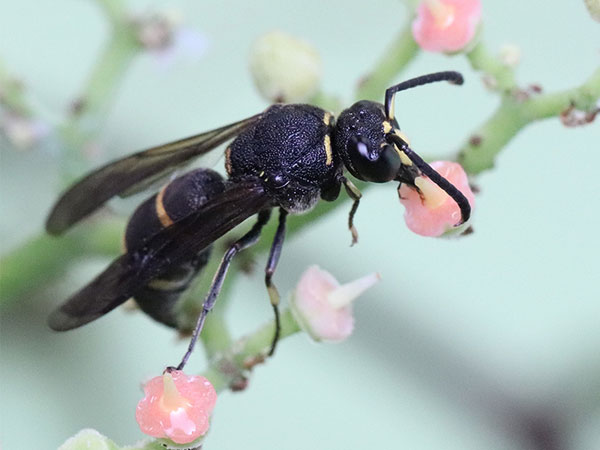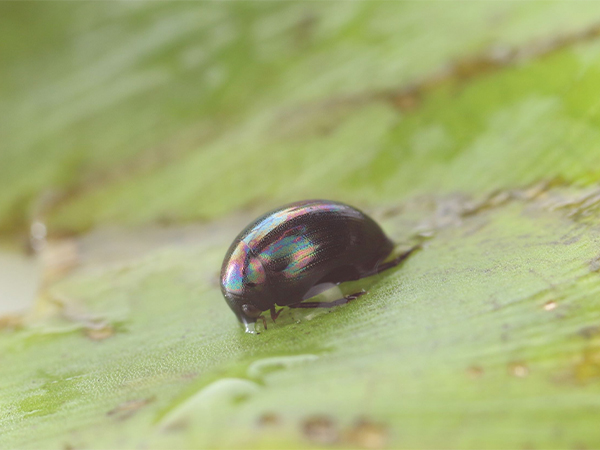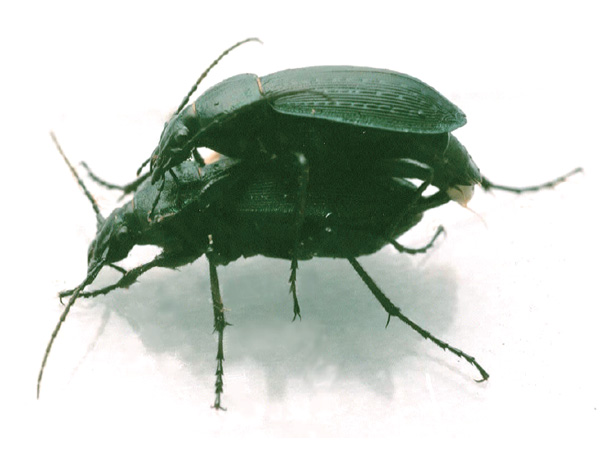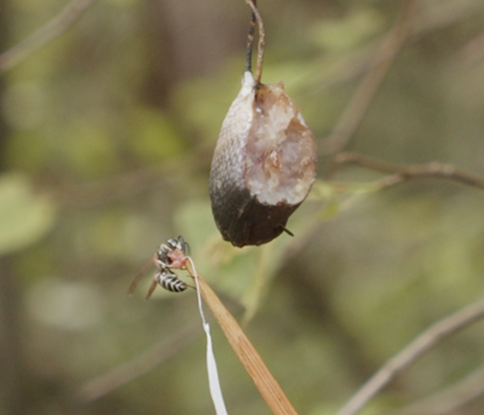Prey can evade predators and also avoid attacks. However, some can escape after a successful attack, that is, from inside a predator after being swallowed. For example, some animals that can survive predators’ digestive systems are excreted in feces and thereby escape, albeit in a passive manner. Now, for the first time, research has documented the quick, active escape of prey from the body of a predator after being eaten.
Kobe University ecologist SUGIURA Shinji found that the aquatic beetle Regimbartia attenuata can actively escape from the vent of the frog Pelophylax nigromaculatus via the digestive system ( Fig. 1; Movie ). Furthermore, his laboratory experiments suggest that the beetle can promote frog excretion to facilitate its escape. His research appears in the 3 August 2020 issue of Current Biology.

(a) An adult of the aquatic beetle Regimbartia attenuata.
(b) The potential predator Pelophylax nigromaculatus.
(c) R. attenuata escaping from the vent of P. nigromaculatus.
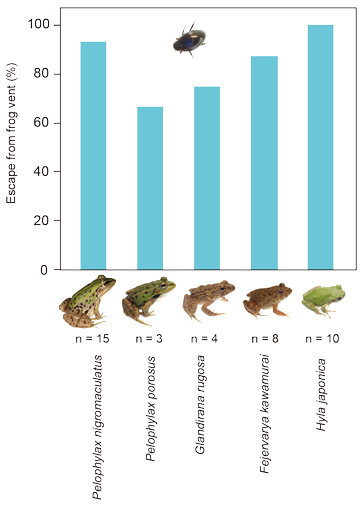
Success rates of the escape of Regimbartia attenuata from five frog species.
Many frog species lack teeth and are unable to kill prey before swallowing it. Therefore, frogs’ digestive systems play an important role in killing prey. To investigate the defenses of insects against frogs, Sugiura provided frogs with various insect species.
The aquatic beetle species R. attenuata and frog species P. nigromaculatus are frequently found in the same paddy fields in Japan (Fig. 1). Because P. nigromaculatus preys on various terrestrial and aquatic insects, this frog species can attack R. attenuata under field conditions. To investigate the responses of R. attenuata to P. nigromaculatus, Sugiura provided R. attenuata adults (body length 3.8–5.0 mm) to juvenile and adult P. nigromaculatus (snout–vent length 22.5–74.2 mm) under laboratory conditions. All adults were easily swallowed by the frogs. However, 93.3% of the swallowed beetles were excreted within 6 h (0.1–3.5 h) after being swallowed (Figs. 1–3). Surprisingly, all excreted beetles were alive and active.
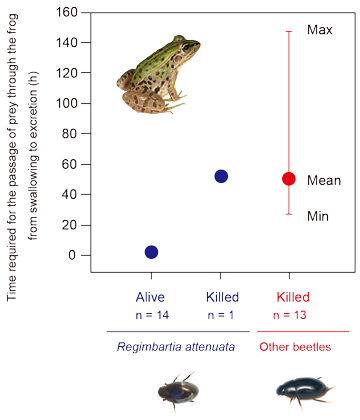
Time required for the passage of Regimbartia attenuata and other beetles through the frog Pelophylax nigromaculatus from swallowing to excretion.
These observations indicate that swallowed R. attenuata move toward the frog vent through the digestive system (Fig. 4). P. nigromaculatus always excreted the undigested parts of prey (except live R. attenuata) > 24 h after swallowing them (Fig. 3). Because the frog’s sphincter muscle pressure keeps the vent closed, the tiny beetles are unable to exit through the vent without inducing the frog to open it. Therefore, R. attenuata may stimulate the frog’s gut to promote excretion. The same behavior was observed when R. attenuata was swallowed by four other frog species: Pelophylax porosus, Glandirana rugosa, Fejervarya kawamurai, and Hyla japonica (Fig. 2).
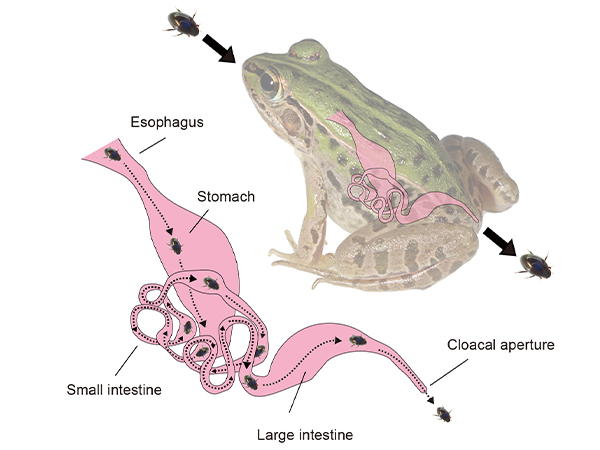
Hypothetical escape route of Regimbartia attenuata through the frog digestive system. The beetle moves toward the frog’s vent via the digestive system (esophagus, stomach, small intestine, and large intestine) and eventually exits through the cloacal aperture.
This study is the first to report the successful escape of prey insects from the vent of a predator and to suggest that the prey promotes predator excretion to escape from inside the predator’s body.
Movie
A beetle species can escape from the vent of a frog
Journal Information
- Title
- “Active escape of prey from predator vent via the digestive tract”
- DOI
- 10.1016/j.cub.2020.06.026
- Author
- Shinji Sugiura
- Journal
- Current Biology
- Movie
- A beetle species can escape from the vent of a frog






